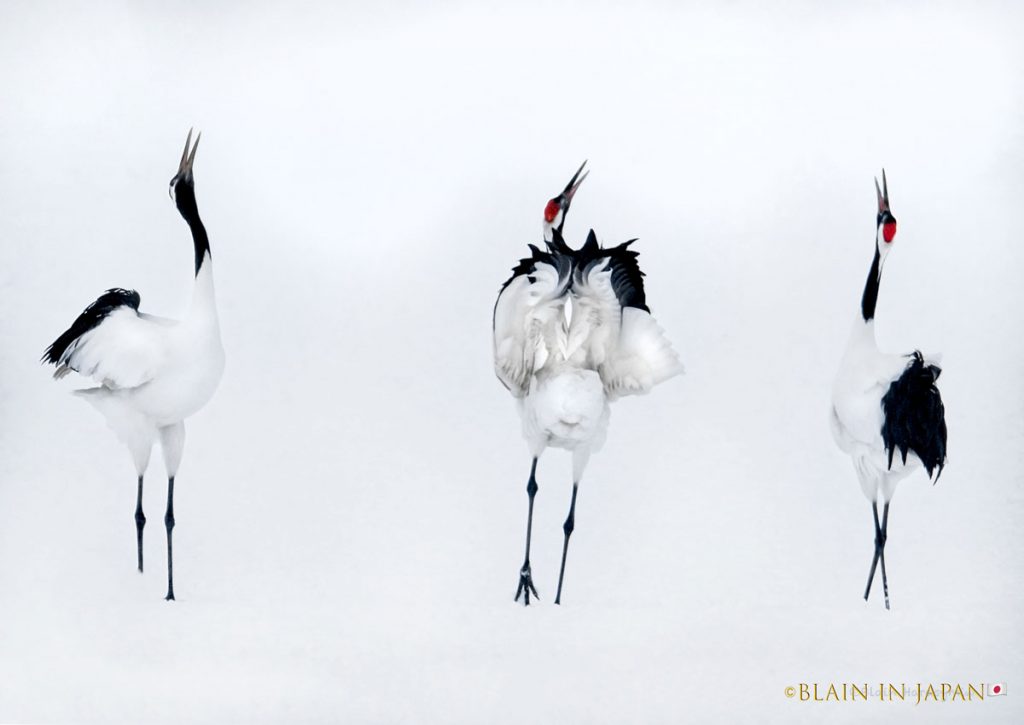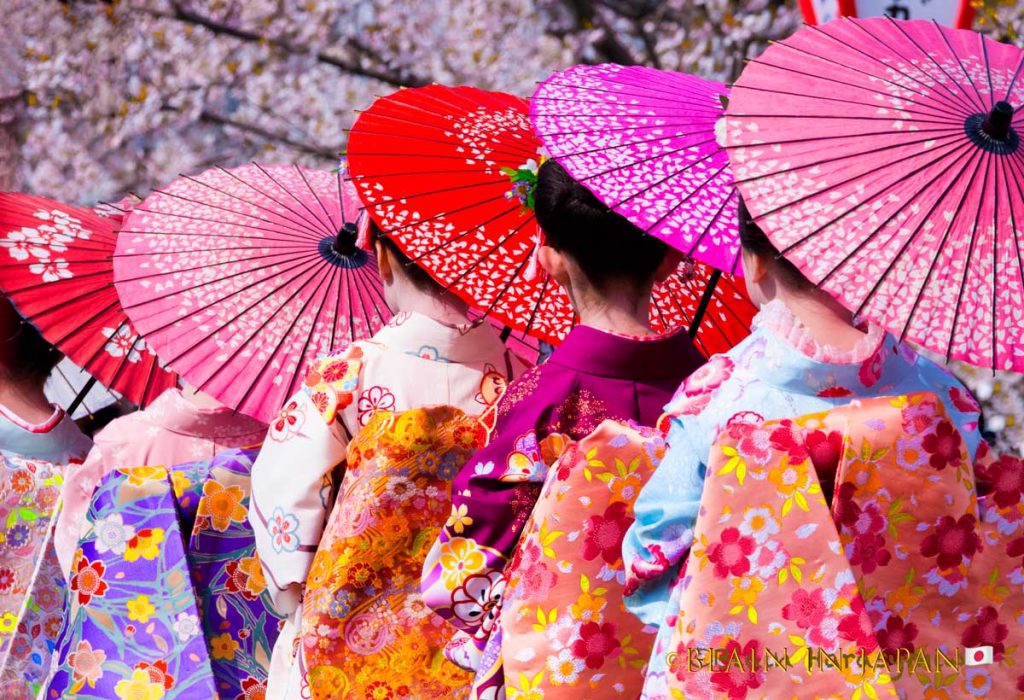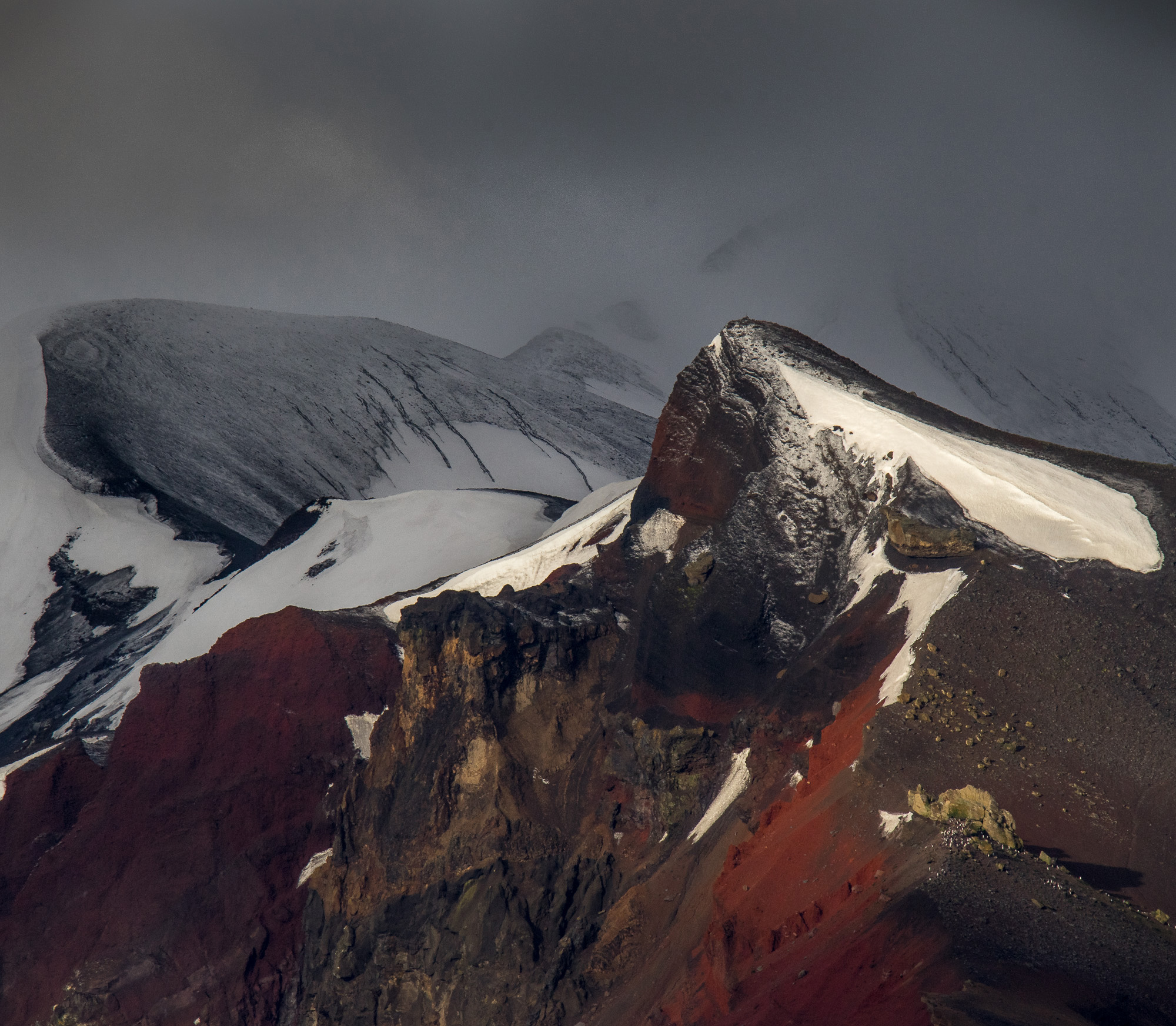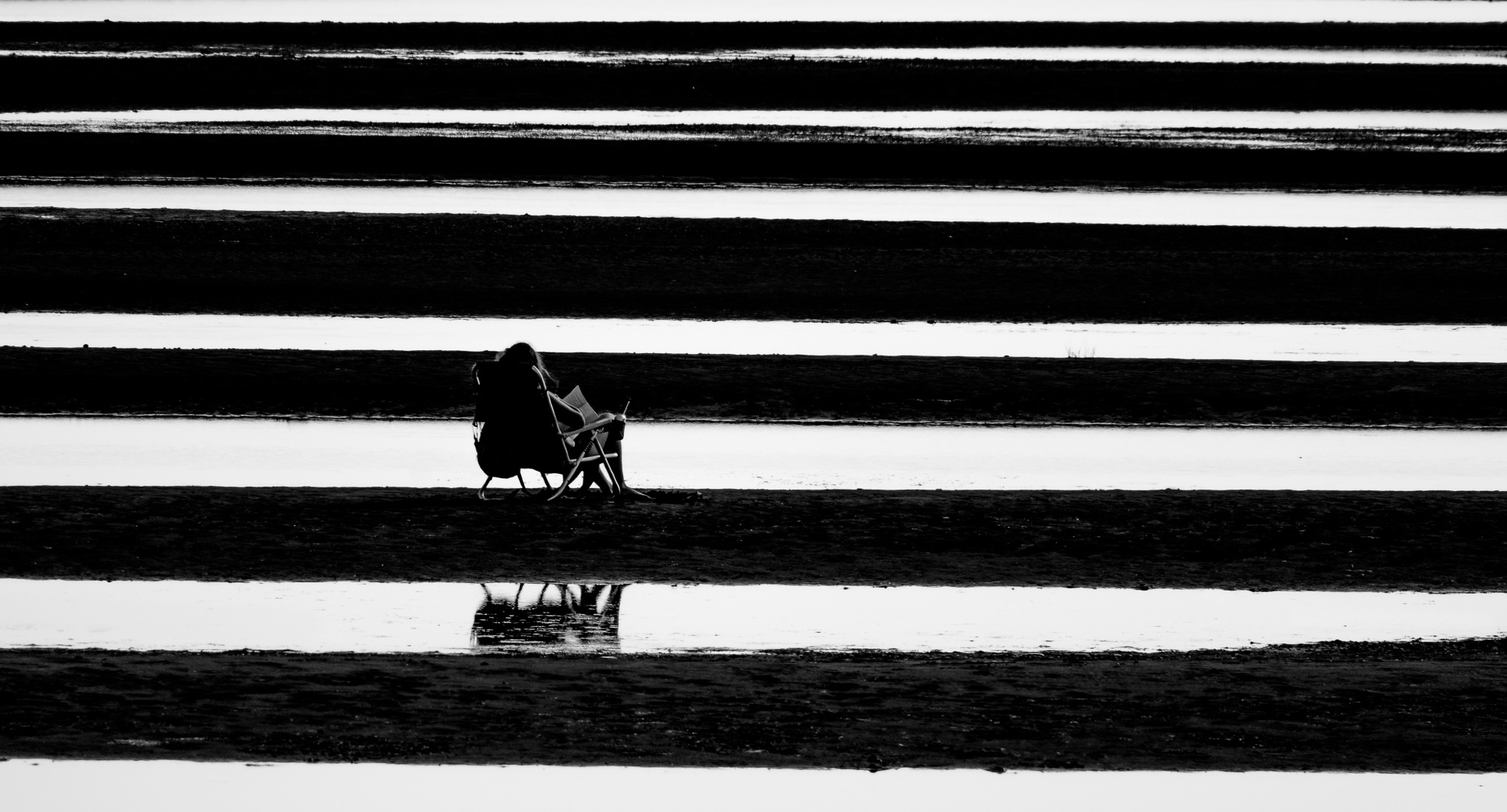By Mark Dubovoy
INTRODUCTION
Although I had seen and tested the Leica S2 at a number of meetings and trade shows in the past, last weekend was the first time I had an opportunity to really put the camera through its paces.
This article is not intended to be a full and detailed test of the camera. There are plenty of sites and magazines that describe each feature and perform all kinds of technical tests on cameras.
The purpose of the article is to try to describe my early impressions on the camera from a practical point of view as a photographer, as opposed to as a scientist or an engineer.
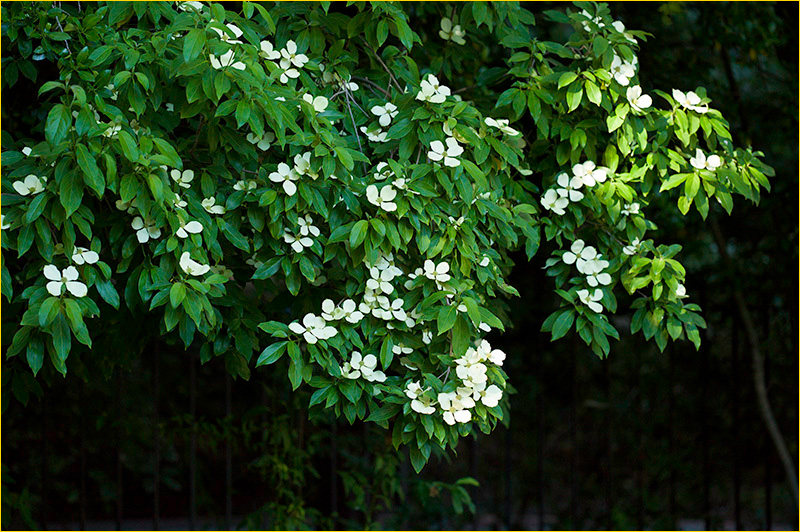
"In the back yard #1 ". Leica S2, handheld. 180 mm lens, wide open at F/3.5 ISO 640
____________________________________________________________________________________
WHERE DOES IT FIT?
The S2 is what I would describe as a “tweener”. It fits somewhere between a 35 mm full frame DSLR and a Medium Format camera.
In terms of size and weight, it is actually smaller and feels lighter than the top of the line Japanese DSLR’s. In terms of image quality, it eats them alive. As you will see below, the S2 image quality is squarely in high quality Medium Format territory.
So, what is the S2 – a small format, or a Medium Format camera?
Well, it is neither. It is a tweener.
Since my main interest is always maximum image quality, I spent most of my time comparing the S2 with my PhaseOne DF/P65+ Medium Format system.
In terms of pricing, the S2 comes closer to Medium Format systems.
A PhaseOne DF camera with a P65+ back and 80 mm lens, if bought as a bundle goes for approximately $42,000.00 US dollars.
The Leica S2 body is priced at $22,995.00 US dollars in its regular version (a special version with a Sapphire screen and a Platinum service contract costs an extra $5,000.00 dollars).
All S2 lenses will be manufactured in two versions: A standard version that requires the use of the focal plane shutter in the camera and a “central shutter” (Leica’s name for a leaf shutter type lens) version with the shutter built into the lens.
The standard 70 mm lens for the S2 retails for $5,295.00 ($5,995 with a central shutter).
The basic S2 body and 70 mm lens at $28,290.00 is approximately $13,700.00 less than the PhaseOne system I used for the test, and comes close to the prices of Medium Format 39 Megapixel systems.
____________________________________________________________________________________
LEAF SHUTTERS
A few words about leaf shutter lenses are in order.
Both, PhaseOne and Leica are now shipping a number of lenses with leaf shutters. Hasselblad lenses have leaf shutters.
Why?
The main advantages of leaf shutter lenses are:
– Much higher sync speeds when using flash or strobes.
– Much less vibration during the actual exposure if the camera is used in mirror-up mode.
Obviously, any photographer that uses strobes prefers leaf shutter lenses, since they do away with the sync limitations of focal plane shutters.
Landscape and nature photographers also greatly value leaf shutter lenses because of the reduction in vibration. Long focal length lenses particularly benefit from this reduction in vibration. If you have ever shot a non-leaf shutter 300 mm lens or longer with a high resolution Medium Format digital camera, you have probably experienced enough vibration from the focal plane shutter to affect the sharpness and resolution of the image.
The disadvantage of leaf shutter lenses is that they tend to be more expensive and slightly larger and heavier.
____________________________________________________________________________________
ERGONOMICS
I have always been a fan of Leica ergonomics, and the S2 does not disappoint.
The S2 represents a huge relief from the ever increasing number of buttons and dials, as well as the poorly designed (in my opinion) custom functions and menus in Japanese DSLR’s and Medium Format cameras.
The Leica feels good in the hand, is kind to the eye, and all the functions, features and controls are presented in perfectly logical fashion, exactly where one expects them to be.
The solidity and tight tolerances of the body and the lenses, as well as the quality of the image through the viewfinder are pure Leica joy. Ditto for the feel of the shutter release button and the greatly reduced amount of vibration of the focal plane shutter mechanism versus other SLR’s.
I never even looked at the users manual, and I had absolutely no difficulty using the camera. In fact, I had zero questions about the operation of the S2. Once I realized that you push on the scroll wheel to select things (a brilliant design that eliminates additional buttons), I felt I had a complete understanding of everything the camera can do. This proved to be correct when I used the S2 for two solid days without encountering a single glitch.
I wanted to make sure that the reason for the camera feeling so natural to me was not because I have been a Leica user for many years. So, I handed the camera over to my 16 year old son, who had never used a Leica M or a Leica SLR. He was shooting with the S2 using all modes in literally under 90 seconds with no instruction from me, and without a user’s manual.
Big kudos to Leica in the basic design and ergonomics department.

"In the back yard #3". PhaseOne DF/P65+, handheld. 28 mm lens wide open at F/4. ISO 400
____________________________________________________________________________________
FOCUSING
It is immediately obvious that the Leica autofocusing system is far superior to any current Medium Format system.
First of all, it focuses faster than Hasselblad, Mamiya and PhaseOne cameras.
But there is much more:
Leica makes a huge effort through fine adjustments in the manufacturing process to make sure that the sensor in each camera is perfectly positioned within extremely tight tolerances.
An important thing that few photographers are aware of is that autofocus systems are not continuous; they work in zones. The Leica S2 has many more zones of focus from close up to infinity versus the competition. In other words, the S2 can focus more accurately at a specific distance.
Most lenses suffer from focus shift as you change the aperture. This is a problem, since autofocus systems focus with the lens wide open. Hasselblad makes a correction (in the H4 series) with a software model. The camera figures out the lens, the focusing distance and aperture, and just before the exposure it applies an algorithm that re-focuses the lens. The problem is that the algorithm is based on one "ideal sample" lens. Unfortunately, each real lens differs somewhat from the “model lens”, so the system is not totally accurate. The PhaseOne lenses in my experience seem to have less focus shift. As far as I know, PhaseOne does not make any corrections to compensate for focus shift; PhaseOne users simply have to live with it.
The Leica S lenses have practically immeasurable focus shift (they also have practically immeasurable vignetting). They are designed for maximum performance wide open, and Leica claims no change in performance when you close the lens down (except for diffraction at small apertures). In my images, the S2 lenses definitely exhibit absolutely superb performance in every respect, sharpness, contrast, color rendition, total lack of chromatic aberration, evenness of illumination from edge to edge and corner to corner, negligible geometric distortions, etc. They are without question some of the best lenses I have ever used if not outright the best lenses I have ever experienced.
The Leica autofocus sensor system is quite unique and truly state of the art. At least in theory, it should surpass any other system currently available. For a detailed technical description, I recommend the articles written about it inLeica Fotografiemagazine.
So here is my take on autofocus systems:
I basically do not trust the autofocus systems in Medium Format cameras. Periodically they fail for me, so I make it a habit to always fine tune with manual focus.
A typical example is as follows:
Suppose I want to focus on a tree at about 200-300 feet. Using autofocus with a Medium Format camera, the system often goes into the infinity focusing zone. But, the tree is not at infinity. Add to this a high resolution MF back like a P65+, and the tree is guaranteed to look out of focus. Finally, focus shift could make matters worse if it goes the wrong way.
Even when using manual focus corrections, I find myself at the very limits of the focusing rings, gears and cams in Medium Format SLR systems.
Not so with the Leica. The S2 has many more focus zones, and the lenses have essentially no focus shift. Combined with Leica’s unique autofocus sensor system, autofocus on the S2 is deadly accurate.
Manual focus on the Leica is also a joy to use. It is definitely more refined and more accurate than the Medium Format cameras.
After several days of shooting, I did not find one single image where the S2 autofocus system failed. I tried to make it fail and it never did. I have never experienced this with any other camera (35 mm size DSLR’s included).
Note: I am not talking about pointing the camera at a blank sky here. That would be silly. I am talking about pointing the camera at an object it should realistically be able to focus on, and having the camera focus precisely as it should.
(Not to digress much, focusing accuracy is one of the reasons why I like ALPA technical cameras so much. Manual focus using lenses in ALPA mounts with a properly shimmed Medium Format back adapter is incredibly accurate. The ALPA groundglass and focusing bellows are of exceptional quality too).
____________________________________________________________________________________
METHODOLOGY
In order to judge image quality, I shot as many images as I could during a 2 day period with the S2 and a PhaseOne DF camera with a P65+ back. I had the 70 mm and the 180 mm S2 lenses available, plus 5 PhaseOne lenses. I obviously played with all of them, but I believe the fairest comparison was using the “normal” lenses on both cameras:
The 70 mm on the S2
The 80 mm “D” lens on the PhaseOne
The cameras were set side-by-side on large Series 5 Gitzo carbon fiber tripods and I made exposures of many types of subjects under all kinds of lighting conditions in normal mode as well as mirror up mode. I also made some hand-held exposures. Most of the images were shot using both autofocus and manual focus at different apertures for the sake of comparison. Finally, just out of curiosity, I also took a few shots on the tripod and hand held with a Leica M9 and the 50mm / F 0.95 Noctilux (an extraordinary “normal” lens) at the same apertures as the equivalent MF shots.
The PhaseOne images were processed using CaptureOne 5.1; the Leica images were processed using Lightroom 3.
All adjustments were zeroed and disabled (including sharpening). The only adjustment I made to the images was a White Balance adjustment using an X-Rite Passport.
I made 24×30 inch prints of the images, using an Epson 9900. This is a nice size to show meaningful differences.
If any readers expected to be able to pixel peep test images in this article, I am sorry to disappoint you. As I have mentioned many times in the past, because of their low resolution and the restricted color gamut of most monitors (let alone the fact that few people properly calibrate and profile their monitors), pixel peeping on a monitor IS NOT a proper way to judge image quality. Prints are the proper way.
Those folks interested in seeing the differences for themselves, should borrow the cameras, shoot some images and make their own prints.
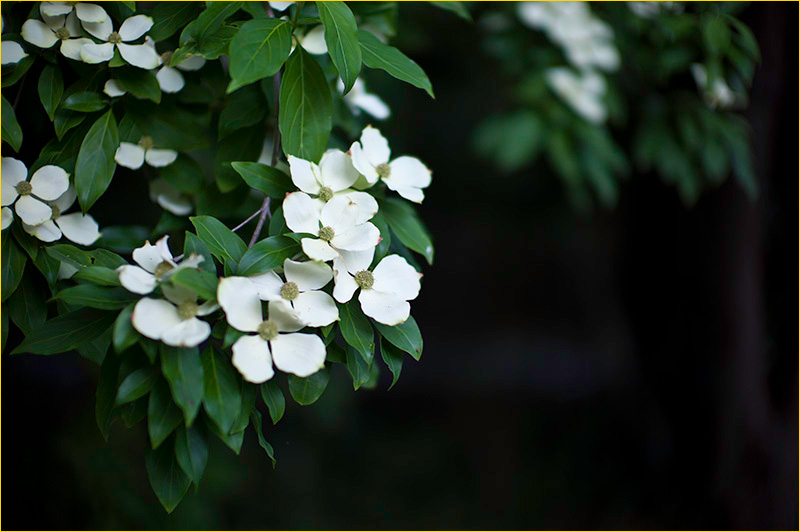
"In the back yard #2". Leica M9, handheld. 50 mm Noctilux lens, wide open at F/0.95 ISO 640
____________________________________________________________________________________
IMAGE QUALITY
Resolution:
The PhaseOne DF with the P65+ back and 80 mm D lens delivers higher resolution than the Leica S2 with the 70 mm lens. The difference is subtle, but it is noticeable in side-by-side print comparisons.
Dynamic Range:
The Dynamic Range of the S2 seems to be almost identical to the PhaseOne system. I can detect a very slight advantage in favor of the P65+ in the deepest shadow detail in one of my prints, but I would say that from a practical point of view, there is no meaningful difference in Dynamic Range between the two systems.
Color:
I have always said in the past, and I continue to believe that the color rendition of the The PhaseOne P65+ is truly excellent, and the best to be had in a Medium Format System. The Leica S2, however, seems more accurate in terms of certain colors like foliage, deep red fabrics and blue skies, and the color palette saturates more naturally to the eye than the PhaseOne does. I prefer the color rendition of the S2, and I give it the number one spot in terms of color reproduction.
Surprise!
I love surprises, and the real surprise here is how well the M9/Noctilux combination holds up. To the naked eye, at normal viewing distances, the M9 24×30 inch prints appear to be in the same general resolution league as the S2 and the P65+. Only upon very close scrutiny can one detect a difference. Most observers will not subject prints to such scrutiny. This is an amazing accomplishment, Leica has done an admirable job with the contrast, accutance and resolution of the M9 to give the eye the impression of such high resolution at normal and even closer than normal viewing distances with relatively large prints.
I continue to marvel at how M9 prints hold up much better than Canon or Nikon prints when you go big. Straight out of Lightroom 3, without any adjustments, the M9 images look a little too punchy, too contrasty and overly saturated for my taste. I suppose this is the “Leica M look”, but for better accuracy I tend to tame them when I edit. By contrast, the S2 images straight out of Lightroom with no adjustments look absolutely gorgeous. This translates into real time savings while editing, another positive trait of the S2.
In the end though, one cannot violate the laws of Physics:
M9 images, as good as they are, do not have quite the same level of fine detail rendition, color accuracy and tonal finesse, nor do they have the dynamic range of the bigger S2 and PhaseOne systems.
Physically larger sensors (usually with more megapixels and bigger photo sites) have an edge in resolution of fine details as well as better tonal micro-dynamics and shadow detail.
Finally, better designed and properly aligned sensors, as well as superb lenses clearly show their contributions to image quality.
So, in terms of the laws of Physics, there are no real surprises. The general behavior of the different systems I compared for this article is exactly as should be expected.
____________________________________________________________________________________
WHAT IS THERE NOT TO LIKE ABOUT THE S2?
Two things:
– The lens hoods
– The delay in the market introduction of most S2 lenses
The second item is self-explanatory. It is difficult to recommend and frustrating to try to use a system that only has one or two lenses available. Most of the lenses that were announced quite a while ago are not out yet, and the central shutter versions continue to be delayed. Until these lenses are available, the S2 system is likely to stay marginalized.
I will let the reader decide whether Leica made a major tactical blunder by not having a relatively full lens line available at the time that the new system was introduced.
Now let me spend a little more time on the first item, the lens hoods.
I do not know what has happened to the world. In the past, Japanese companies seemed to be unwilling, unable or uninterested (or a combination of all three) to design and make a decent lens hood.
Meanwhile Leica, for the most part, always made great lens hoods.
My hope was that the world would come to its senses, and after seeing the Leica hoods for many years, the Japanese companies would finally start making decent hoods.
Instead, the world has gone the wrong way, and now Leica is making Japanese-style bad hoods.
I will mince no words here:
The Leica S2 lens hoods are an abomination.
I sincerely hope that these kinds of bad lens hoods never make it to the M-System!
Leica makes great lens hoods for the M-System and they used to make great lens hoods for the R system. What happened here is a complete mystery to me.
Leica, are you listening? I hope you are.
Let me repeat myself: Japanese style reversible lens hoods are an abomination. Photographers hate them. They are completely impractical in the field. I have had several Leica dealers point out that they are telling customers to purchase collapsible rubber hoods instead.
Even the demo 70 mm lens that I borrowed from my local dealer came with a non-Leica collapsible rubber lens hood installed.
Dear Leica – Do you think there is a message when your own dealers are telling their customers to trash your hoods and replace them with non-Leica hoods?
I think it is inexcusable for Leica to have anything other than slide out hoods for the normal and long S2 lenses and rectangular fixed lens hoods with rectangular lens caps for the wide angle S2 lenses.
(Of course, I also wish that the Japanese camera manufacturers would change their ways. Most of the Mamiya, Hasselblad (Fuji), PhaseOne, Nikon, Canon, Sony, etc. lens hoods are truly horrible).
____________________________________________________________________________________
CONCLUSION
The S2 system is a superb capture instrument. It has excellent ergonomics and it is amazingly compact and quick in light of the image quality it delivers. It exudes Leica quality in every sense of the word. Like all Leica products, it is expensive, but not out of line compared to Medium Format cameras.
Here is a camera that is actually smaller and feels lighter than a 35 mm pro DSLR, handles much better than any Medium Format camera, yet delivers image quality competitive with the bigger, heavier and much more cumbersome top of the line Medium Format systems. I would say that this is proof that the tweener concept is a great one.
Once enough lenses become available, this could easily become the system of choice for a number of serious photographers.
June, 2010
____________________________________________________________________________________
About Mark Dubovoy
Dr. Dubovoy is highly regarded as a technical expert in many aspects of printing technology and photography. As such, he is a regular writer of technical articles for The Luminous Landscape, PHOTO Techniques magazine, and a lecturer at various workshops.
His photographs are included in a number of private collections, as well as the permanent collections of the Museum of Contemporary Art in Mexico City, the San Francisco Museum of Modern Art, the Monterey Art Museum, the Berkeley Art Museum and the Museum of Modern Art in Nanao Japan.
Mark is a partner and board member of The Luminous Landscape Inc.
Read this story and all the best stories on The Luminous Landscape
The author has made this story available to Luminous Landscape members only. Upgrade to get instant access to this story and other benefits available only to members.
Why choose us?
Luminous-Landscape is a membership site. Our website contains over 5300 articles on almost every topic, camera, lens and printer you can imagine. Our membership model is simple, just $2 a month ($24.00 USD a year). This $24 gains you access to a wealth of information including all our past and future video tutorials on such topics as Lightroom, Capture One, Printing, file management and dozens of interviews and travel videos.
- New Articles every few days
- All original content found nowhere else on the web
- No Pop Up Google Sense ads – Our advertisers are photo related
- Download/stream video to any device
- NEW videos monthly
- Top well-known photographer contributors
- Posts from industry leaders
- Speciality Photography Workshops
- Mobile device scalable
- Exclusive video interviews
- Special vendor offers for members
- Hands On Product reviews
- FREE – User Forum. One of the most read user forums on the internet
- Access to our community Buy and Sell pages; for members only.






